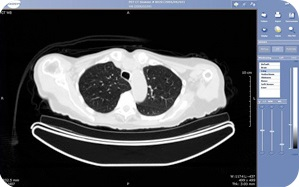Unit 10: Lesson 4: E-Mail
Lesson 4: Email

Lesson 4: Email
As our lives become increasingly tied to the use of electronics, we've also seen that many types of communication have become electronic. Healthcare settings and healthcare professionals are increasingly using email and other forms of electronic communication to interact with patients and other healthcare professionals. For example, a doctor's office may send out a reminder email to a patient to remind him of an upcoming appointment, or a health scientist might email a colleague about the findings from her research and discuss what the results might mean for treating a disease.

Emails offer several advantages within the health sciences. They can provide a way for professionals in healthcare settings to reach patients who may not always be available by phone. They can also allow patients to receive information when it is convenient for them; since email is widely available, it will enable patients to retrieve their messages at home, at work, and at locations such as libraries where the public may use computers for some time, through portable devices such as smartphones, and so on. Emails also can save healthcare settings money in contrast to written correspondence sent through the mail, which requires postage and purchasing materials on which to send the information. Finally, electronic messages offer the advantage of almost instantaneous delivery, where regular mail can take several days or more to reach a recipient.
Email also has disadvantages within a healthcare setting. One major disadvantage is that there are questions about information security. For example, some employers read all emails sent to corporate email addresses; if a patient used their corporate email to contact a healthcare professional, they might find personal information from the person's healthcare record. Another possible issue is that an email might be overlooked or disregarded, as many people receive many email messages each day. For significant health information, emails may not be the most reliable form of communication.
For health science professionals who do use email in their work, whether to email patients or to communicate with other health science professionals, communication experts recommend several vital precautions:
- Change passwords frequently. Given the possible security issues with health-related emails, protecting the security of the information as much as possible is crucial.
- Please limit the number of people who receive the email to those who need it. While some emails will need to be sent to all member healthcare team, members, information may only need to be mailed to the leader or another member.
- Write messages that are clear and to the point.
- Reply to emails in a timely fashion. Try to reply within 24 hours, if possible, and reply to any emails received over the weekend at the beginning of the week.
- Use proper grammar, spelling, and language. Keep in mind that errors can negatively affect not only you but also your employer. They can also affect the meaning of the information. Use spell check and proofread all email messages to help reduce errors.
- Consider the message carefully before sending it. Since emails do not show the writer's emotions or expressions, misinterpretations can sometimes happen. A message may seem rude when it is not meant to be. Read through the email with a careful eye to help avoid these situations.
- If you receive an email that makes you angry and upset you somehow, wait to respond. Disagreements and conflicts can happen in healthcare settings, and waiting to respond can help de-escalate the situation and allow you to formulate a response that won't inflame the conflict further.
These are just a few tips communication experts recommend for email usage. The health sciences have some specific concerns, such as confidentiality that healthcare professionals must consider when engaging in any form of communication email included.
Telemedicine
| A CT scan displayed through teleradiology |
 |
Another example of how technology has impacted the health sciences is telemedicine. Telemedicine uses 'telecommunication and information technologies to provide clinical health care at a distance.' While most people in North America are used to seeing their doctor or other healthcare provider in person, this is not always possible for individuals in rural areas or different parts of the world. Telemedicine allows health science professionals to connect with people outside their immediate surroundings.
There are three different types of telemedicine currently being used. Store-and-forward telemedicine involves recording patient information, which is then forwarded to a doctor or other healthcare professional who assesses the data offline. One advantage of store-and-forward telemedicine is that it doesn't require both parties to be online simultaneously. Dermatology is one area of medicine where store-and-forward telemedicine is standard. Remote-monitoring telemedicine involves using technological devices to allow healthcare professionals to monitor a patient with a chronic disease.
In many cases, the devices send wireless information about the patient's health, such as blood pressure, to healthcare professionals. Finally, interactive telemedicine sometimes involves real-time exchanges between patients and health scientists through phone calls, webcams, or home visits. Such exchanges can benefit those living in areas where healthcare or specialists may not be readily available.
There are many areas where telemedicine is helping to improve health and wellness. For example, telesurgery is an evolving aspect of telemedicine where a surgeon uses telecommunication to operate on a patient using robotics. The robots at the surgery site are remotely overseen by surgeons or doctors, allowing for specialized procedures in locations where they might not otherwise be offered. Health scientists may also use forms of telemedicine to consult with other health professionals about particular patients. For example, one physician may take x-rays or the results of different diagnostic tests and send them via the Internet to another physician who specializes in a particular disease or illness, allowing that physician to add valuable insight into the patient's diagnosis and treatment.
